Florian Krumpöck – Années de Pèlerinage
Artists: Florian Krumpöck
Title: Années de Pèlerinage
Catalogue No.: SM 157 – 2 CD
Release: 14.11.2011
Description
Born in 1978 in Vienna, the pianist and conductor Florian Krumpöck is designated General Music Director designate and Principal Conductor of the North German Philharmonic Orchestra and the municipal theatre in Rostock. He gave a highly acclaimed solo debut at the Vienna Musikverein in 2008, playing two complete cycles of 32 piano sonatas by Ludwig van Beethoven for the first time.
The German piano manufacturer Blüthner has provided him with his own concert grand for life, and the instrument accompanies him on tours and to recordings.
To date, Florian Krumpöck has released six CDs featuring solo performances of works by Mozart, Schubert, Liszt and Weber.
Tracklist
Années de Pèlerinage, Deuxième Année – Italie
Bozo Paradzik – Double Bass goes Beethoven
Artists: Bozo Paradzik
Title: Double Bass goes Beethoven – Beethoven Cello Sonatas with Double Bass Vol. 1
Catalogue No.: SM 162
Release: 14.11.2011
Description
WORLD PREMIER RECORDING OF ALL BEETHOVEN’S CELLO SONATAS ON DOUBLE BASS (Volume 1)
In 1799 Beethoven himself played the piano part in his Sonata in G minor, Opus 5, no. 2 with the greatest double bass player of the day, Domenico Dragonetti. This fact made a strong impression on me even as a boy, and I dreamed that one day I too might play a Beethoven sonata on the double bass.
Beethoven’s work decisively shaped my musical development and career. I was sixteen years old when I first played a Beethoven symphony, his Seventh, in an orchestra. His music moved me profoundly, and I began to fall utterly and passionately in love with it.
Because of their high level of musical sophistication and the technical difficulties they pose, Beethoven’s works present a formidable challenge to any interpreter. For me, with my innate tendency to perfectionism, there was no question of a superficial approach to the sonatas. Accordingly, even after my first success playing Beethoven’s Sonata in A major, Opus 69 on the double bass in the year 2000, I immersed myself deeply in the details of style and technique and in perfecting my approach, until I arrived at the present outcome. Only at this point, after more than ten years, did I feel that I was sufficiently mature to take on this great project and realize my dream. I was now ready to perform all of Beethoven’s cello sonatas on the double bass.
I hope many people will experience my interpretation of these sublime works as a personal and enriching gift that enables them to feel this music even more profoundly than before.
Tracklist
with Hansjacob Staemmler (piano)1. Adagio sostenuto 03:11
2. Allegro 15:41
3. Rondo. Allegro vivace 07:21
Beethoven Sonata A major op. 69
with Ulrich Rademacher (piano)
4. Allegro ma non tanto 12:58
5. Scherzo. Allegro molto 05:20
6. Adagio cantabile 01:43
7. Allegro vivace 06:53
Beethoven Sonata D major op. 102, No. 2
with Maria Sofianska (piano)
8. Allegro 07:17
9. Adagio con molto sentimento d’affetto 09:49
10. Allegro fugato 04:31
Casal Quartett – Birth Of The String Quartet Vol. 2
Artists: Casal Quartett
Title: Birth Of The String Quartet Vol. 2
Catalogue No.: SM 143
Release: 24.10.2011
Description
Telemann, Guillemain, Haydn, Mozart. The German classic-magazine “Fono Forum” wrote 2010 about “Birth Of The String Quartet Vol. 1: “An overwhelming hearing experience“. Summer 2010 this product was winning the prestigious ECHO KLASSIK award for „Best recording in Chamber music 17/18th Century“.Never before a String Quartet had four valuables instruments of the violin maker Jacobus Stainer from the 1650 century available, never before a String Quartet has sounded in such a way.With VOL. 2 of this series the Casal Quartett moves the French and German roots of the kind in the center. Beside works of Guillemain and Telemann you can listen to one of the early Viennese quartets of Mozart and from Haydn the first masterpieces from op. 76. With this performers and these instruments the real Sound of the 18. Century will be present for the first time.
Tracklist
| Sonate V | Georg Philipp Telemann |
| Adagio | |
| Allegro | |
| Adagio | |
| Allegro | |
| Quartett op. 12/2 h-moll | Louis Gabriel Guillemain |
| Allegro moderato | |
| Aria grazioso. Altro | |
| Allegro | |
| Streichquartett KV 170 C-Dur | Wolfgang Amadé Mozart |
| Andante | |
| Thema. Menuetto | |
| Un poco Adagio | |
| Rondeaux. Allegro | |
| Streichquartett op. 76/1 G-Dur Hob. III:75 | Joseph Haydn |
| Allegro con spirito | |
| Adagio sostenuto | |
| Menuet.Presto | |
| Finale. Allegro ma non troppo |
Margarita Höhenrieder – Emmanuel Pahud: Wie ein Traum am Rande der Unendlichkeit
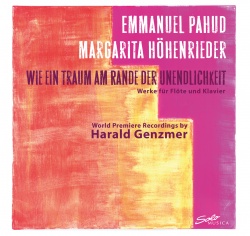 Artists: Margarita Höhenrieder, Emmanuel Pahud
Artists: Margarita Höhenrieder, Emmanuel Pahud
Title: Wie ein Traum am Rande der Unendlichkeit – Weltersteinspielungen von Harald Genzmer
Catalogue No.: SM 159
Release: 12.09.2011
Description
His music is full of vigour and energy, humour and charm; it is timeless and life-affirming.
“When I am finally no longer on this planet, you will at least have something of me …”. With those words Harald Genzmer dedicated to Margarita Höhenrieder his last great work, a vision of parting “like a dream on the verge of endlessness”. It was also its express desire to specify this work with probably at present the best Flute-player Emmanuel Pahud.
When Margarita Höhenrieder was with him a few days before his death, he was above all interested in her artistic plans, including the premiere of the Fantasie des Abschieds with Emmanuel Pahud. Almost incidentally, he pointed to several sheets of music on his desk: studies for flutes he had just composed. The notation was so clear that one could have played them at sight. She was deeply touched. “What can I do for you?” was her last question to him. His answer: “Play my works!”
Tracklist
Allegro moderato
Ruhig fließend
Vivace, marcato
3. Sonate für Flöte solo
Vivace
Tranquillo e con fantasia
Allegretto e poco rubato
Finale – Allegro molto
Sechs Miniaturen
Andante
Abend – Dämmerung
Tranquillo
Kleine Melodie
Dolcissimo
Trauermusik
Fantasie für Flöte und Klavier
Allegro molto
Tranquillo – un poco libero
Allegro amabile
Mit unendlicher Ruhe – Traumstück
Rubato, molto tranquillo e espressivo
Adam Mital – Olimpia Tolan: Central Europe
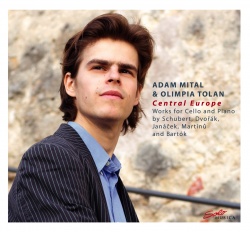 Artists: Adam Mital, Olimpia Tolan
Artists: Adam Mital, Olimpia Tolan
Title: Central Europe Works for Cello and Piano by Schubert, Dvorak, Janàcek, Martinu and Bartok
Catalogue No.: SM 153
Release: 12.09.2011
Description
Dvorák, Janácek, Martinu and Bartók composed a whole series of works for cello and piano. Fascinated by their tonal language, which was greatly influenced by the folk songs of their respective countries, I have long cherished the idea of recording these works.
The relationship of Schubert’s music to the works of these composers from the neighbouring countries is interesting in many respects. Apart from Prague and Budapest, Schubert’s city of Vienna is both geographically and culturally one of the important cultural centres of central Europe and Schubert’s work undoubtedly influenced the other composers. The programmatic transition from Schubert to Dvorák and then Janácek is of special interest, above all as far as the poetic statement of their works is concerned. Dvorák and Martinu represent Bohemia, Janácek Moravia and Bartók Hungary.This present recording therefore takes the listener on a journey through eastern Central Europe, from Vienna via Bohemia, Moravia and Slovakia to Transylvania.For me personally it also represents a review of the many years of musical collaboration with my wife Olimpia Tolan, for which I am immensely grateful.Adam Mital
Tracklist
Allegro moderato
Adagio
Allegretto
Klid (Silent Wood) op. 68/V – Antonín Dvořák
Klid (Silent Wood) op. 68/V
Rondo op. 94 – Antonín Dvořák
Rondo op. 94
Pohádka – Leoš Janáček
Con Moto
Con Moto
Allegro
Presto – Leoš Janáček
Presto
Variations on a Theme of Slovak Folk Song – Bohuslav Martinů
Thema – Poco Andante, rubato
Variation I – Moderato
Variation II – Poco Allegro
Variation III – Moderato
Variation IV – Scherzo, Allegretto
Variation V – Allegro
Romanian Dances (arranged by Z.Székely/A.Mital) – Béla Bartók
I – Joc cu bâtă
II – Brâul
III – Pe loc
IV – Buciumeana
V – Poargă românească
VI – Mărunţel
Rebekka Hartmann – Birth Of The Violin
Description
This release is part of the successful Solo Musica “Birth of …” series, aimed at presenting to listeners the oldest known compositions of music for solo instruments and formations played on the oldest available and still playable instruments.
The first two CDs in the series, “Birth Of The Cello” and “Birth Of The String Quartet” have already won several prizes such as the prestigious German ECHO Award for “Birth Of The String Quartet” featuring the renowned Casal Quartet.
This time it is the turn of the violin. We were able, for this recording, to secure the use of a violin made by Antonio Stradivari in 1675, early in his career, as well as the Amati violin “(The) Rethi” of 1669. Born in Munich, the violinist Rebekka Hartmann is a prizewinner of numerous national and international competitions. For this CD, she has recorded works by composers such as Heinrich Ignaz Franz Biber, Francesco Geminiani and Louis-Gabriel Guillemain. Over 90% of the featured works have been recorded for the first time. Played in the way they were originally intended and with an unparalleled virtuosity, this CD represents a journey back through time to the beginnings of the solo repertoire for this wonderful instrument.
Tracklist
Suite in A-major for Violin Solo
Heinrich Ignaz Franz Biber
Violino senza Basso G-minor
Johann Georg Pisendel
Sonata à Violino Solo senza Basso A-minor
Francesco Geminiani
Etüde
Nicola Matteis
Fantasia
Louis-Gabriel Guillemain
Amusement pour le violon seul La Furstemberg
Friedrich Wilhelm Rust
Partite for Violin Solo D-minor
Neue Philharmonie Westfalen – Ludwig van Beethoven – Symphony No. 7
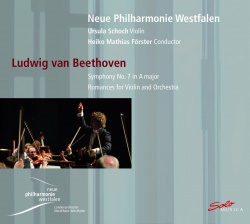 Artists: Neue Philharmonie Westfalen
Artists: Neue Philharmonie Westfalen
Title: Ludwig van Beethoven – Symphony No. 7 – Romances for Violin and Orchestra
Catalogue No.: SM 148
Release: 14.05.2011
Description
The year 2010 has given the Neue Philharmonie Westfalen another opportunity to present itself and the culture of the Ruhr to audiences from far beyond the region, with the orchestra being represented at many levels in the programme of the European Capital of Culture RUHR.2010 – whether within the framework of Local Heroes Weeks, the Henze Project, “!SING Symphony of a Thousand” conducted by Lorin Maazel or the internet opera of the Ruhr Music Theatre – and yet again functioning as an ambassador for culture.
The conductor Heiko Mathias Förster makes regular guest appearances with orchestras all over the world. The Israel Symphony Orchestra, the National Taiwan Symphony Orchestra, the Radio Symphony Orchestra of Berlin, the Orquesta Sinfónica del Gran Teatre del Liceu in Barcelona and the Prague Symphony Orchestra are only a few of the ensembles Heiko Mathias Förster has conducted in recent years.
Ursula Schoch played in the Berlin Philharmonic Orchestra under Claudio Abbado for two years. In 2000 she became leader of the Concertgebouw Orchestra in Amsterdam, which with its principal conductor Mariss Jansons is one of the most popular European ensembles.
Tracklist
Symphony No. 7 A major op. 92
Poco sostenuto – Vivace
Allegretto
Presto
Allegro con brio
Romance for Violin and Orchestra G major op. 40
Romance for Violin and Orchestra F major op. 50
Neue Philharmonie Westfalen
Ursula Schoch Violin
Heiko Mathias Förster Conductor
Miku Nishimoto-Neubert – Miku Nishimoto-Neubert plays Bach
 Artists: Miku Nishimoto-Neubert
Artists: Miku Nishimoto-Neubert
Title: Miku Nishimoto-Neubert plays Bach
Catalogue No.: SM 154
Release: 14.05.2011
Description
Miku Nishimoto-Neubert was born in Tokyo, Japan , learned piano from an early age and began her formal studies at the University for Music and Art in Tokyo.
She has received several prizes at international piano competitions, among them 1st prize at the “Concurso Internacional de Musica Cidade do Porto“ in Portugal in 1997 and a finalists` prize at the “Clara Haskil Competition“ in Vevey. She won in 1998 the 3rd prize (no first prize was awarded) at the “Johann Sebasian Bach Competition“ in Leipzig. Miku Nishimoto-Neubert is committed both to solo work with appearances in Germany, Austria, Portugal, Canada and Japan as well as to collaboration with singers and instrumentalists. She appears regularly in Song Recitals with well-known singers, most recently with Nadja Michael, whom she accompanied for her scenic Song Recitals during the “2010 Wiener Festwochen”. Since 2002 she has held a position as piano accompanist at the College of Music.
Tracklist
Toccata
Allemande
Courante
Air
Sarabande
Gavotte
Gigue
Italienisches Konzert F-Dur BWV 971
Allegro
Andante
Presto
Französische Suite 5 G-Dur BWV 816
Allemande
Courante
Sarabande
Gavotte
Bourrée
Loure
Gigue
Nikolai Tokarev – Tokarev Plays Liszt
Artists: Nikolai Tokarev
Title: Tokarev Plays Liszt – His early Recordings
Catalogue No.: SM 156
Release: 18.04.2011
Description
Looking back at the precision and dedication of the young Nikolai (Kolya) Tokarev when he was performing concerts at 14 or 15, we can only rejoice and marvel at his virtuosity!
Even in his early teens, the young Kolya Tokarev would play recitals featuring Liszt’s Etudes d’exécution transcendante (all12 of them!), transcriptions of operas like Rigoletto, Tannhäuser and Reminiscenses de Don Juan, as well as the Grandes Etudes de Paganini, the concert study Waldesrauschen and the Mephisto Waltz No. 1
To expect a thirteen-year-old pianist to perform this repertoire in public would be utterly unrealistic without an absolutely fantastic, one could almost say unique technical and musical grounding. His grandfather was and his father still is an outstanding concert pianist, his grandmother was a violinist, and his mother is an exceptional cellist. Yet what would such talent have been worth had it not been for his attendance at one of the best piano schools in the world – in his native Russia.
The present recordings of the 13- and 14-year-old Nikolai Tokarev, made for his first concert tours to Japan in 1997/1998 and 2000, demonstrate his talent in a most impressive manner.
Tracklist
Etudes d’exécution transcendante
Nr. 4 “Mazeppa”
Nr. 10, Presto molto agitato f-moll
Nr. 11, “Harmonies du soir”
Mephisto-Waltz Nr.1
“Der Tanz in der Dorfschenke”
Reminiscences de Don Juan
Paraphrase nach Mozarts Oper
Wagner Transcribtion
Isoldes Liebestod
Alexander Rosenblatt
Klaviersonate Nr. 1
Orsolya Korcsolán – Mosaic
Description
This album will indeed be a unique addition to the collectors of classical music who appreciate genuine performing arts.
Cantor Moshe Stern
All but one of the composers represented on this disc were Jewish and all were born in Europe. Some remained there throughout their lives, often suffering the persecution of the Jews which was virtuallyendemic until it reached its ultimate depravity under the Nazis, while others fled, some to safer European countries but most across the Atlantic to the USA.
Vienna-based violinist Orsolya Korcsolan is one of the most versatile classical musicians of her generation. Discovered at the Schleswig-Holstein Music Festival and supported throughout her early carrier by Sir George Solti, praised by TIME magazine journalist Jeremy Caplan, the Juilliard alumna won numerous awards in New York before settling in the heart of the European music world. He technical command and warm, compelling sound, combined with her spirit and elegant stage presence, have captured audiences around the word since her debut in New York`s Paul Hall.
Tracklist
02 Abodah (God’s Worship) – Ernest Bloch
03 Dance of the Rebbitzen – George Perlman
04 The Chassid – Julius Chajes
05 Baal Shem Suite (Three Pictures of Chassidic Life) – Ernest Bloch
06 Rozhinkes mit Mandlen (Raisins and Almonds) – Abraham Goldfaden
07 Danse Hébraique – Josef Bonime
08 Hebrew Rhapsody – Lazare Saminsky
09 Mélodie Hébraique – Issay Alexandrovitch Dobrowen
10 Kaddish – Maurice Ravel, transcription for violin and piano by Lucien Garban
11 Oyfn Pripetshok (At the Fireplace) – Mark Warshawsky
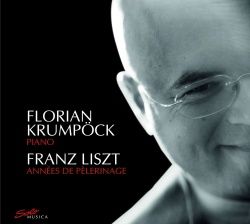
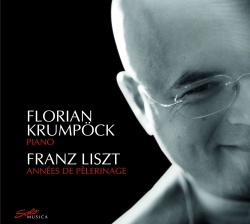

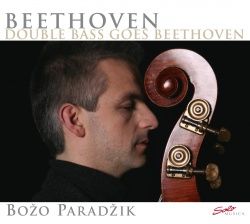
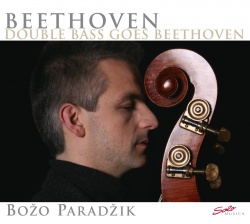

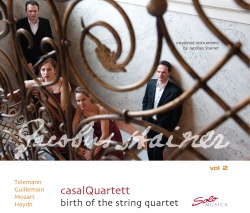


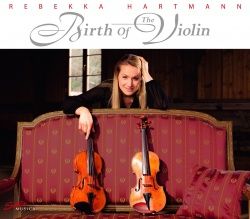
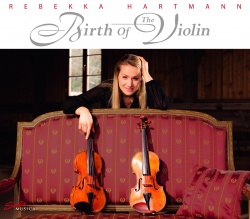 Artists:
Artists: 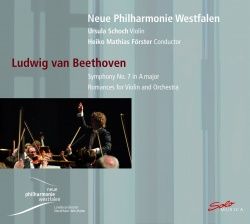


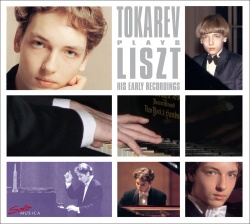

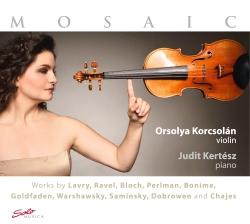 Artists:
Artists: